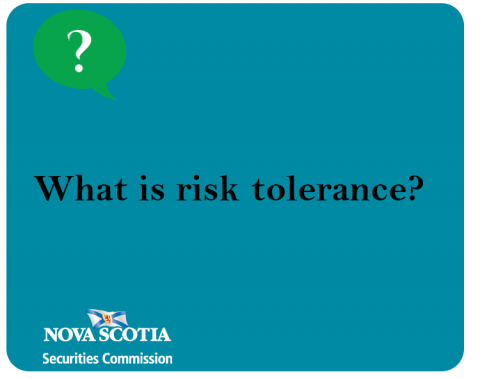Submitted by nsscadmin on

Today the Before You Invest Blog is starting a new series on risk. The series will run for the next nine weeks and look at different types of investment risk. Along the way we’ll talk about and explain:
Market Risk
Liquidity Risk
Concentration Risk
Credit Risk
Reinvestment Risk
Inflation Risk
Time Horizon Risk
Longevity Risk
Foreign Investment Risk
Some posts will be short, while others will require a more in-depth look at a specific type of risk and how it relates to investing. Before we get to types of risk, first we’re going to talk about risk tolerance and investing.
As we’ve said many times, all investments have risk. A person’s risk tolerance is the level of volatility in investment returns and investment losses that an investor can withstand. Risk tolerance is an important part of investing. An investor needs to be realistic about their ability and willingness to handle variances in the value of their investments or a loss of their investment.
Risk tolerance can be broken down into two main areas. They are an investor’s ability to handle risk, and an investor’s willingness to handle risk.
We’ll start by looking at an investor’s ability to handle risk, also referred to as financial risk tolerance. This is an investor’s ability to handle an investment loss financially. For example, can you afford to lose your investment or will you need to reduce your standard of living? If you can’t afford the loss or need to adjust your lifestyle then you may be taking on too much risk. This ability is determined by your financial means – both your financial wealth (savings and investments) and your human capital (your ability to generate income). The greater your financial means, the greater financial risk tolerance you can take on. In other words, you have other financial assets or income to offset any investment losses. But what is your willingness to take financial risks?
An investor’s willingness to handle risk is also referred to as psychological risk tolerance. This is the emotional side of investing and has little to do with your financial means. Many wealthy investors have a low psychological risk tolerance and other investors with more modest means, may invest in risky investments because they have a high psychological risk tolerance. For example., if the level of risk you have taken on with your investments causes you undue stress that affects your day-to-day life, you may be taking on too much risk. If you can’t sleep at night because you worry about your investments, they may be too risky for you.
Determining your risk tolerance is not always easy. It can sometimes be difficult to balance the desire to go after the potential for higher returns with the amount of risk you are willing to take both financially and psychologically.
Make sure you’re honest with yourself when trying to determine your risk tolerance. Past behavior is one way to help determine how much risk you are willing to take. Try and think about a past investment loss, or another time you lost money. What was your reaction to your loss? If you had trouble accepting the loss or reacted negatively it could mean you need to reduce your risk in the future.
Risk tolerance is just one consideration to make when constructing your investment portfolio, however it’s a very important one though and should not be taken lightly. Determining your appropriate risk tolerance will help ensure that you are comfortable both financially and psychologically with your investments.
